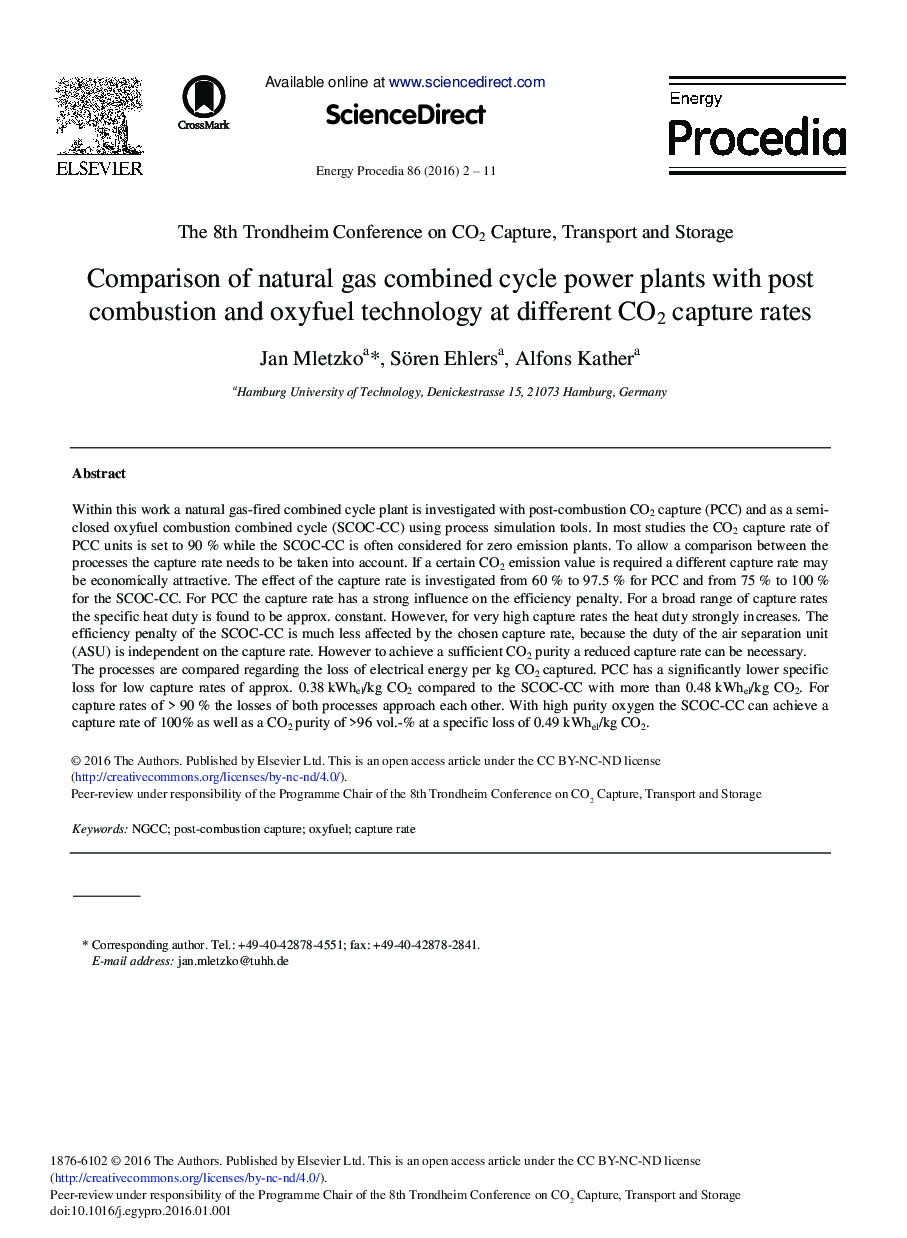| Article ID | Journal | Published Year | Pages | File Type |
|---|---|---|---|---|
| 1508902 | Energy Procedia | 2016 | 10 Pages |
Within this work a natural gas-fired combined cycle plant is investigated with post-combustion CO2 capture (PCC) and as a semi-closed oxyfuel combustion combined cycle (SCOC-CC) using process simulation tools. In most studies the CO2 capture rate of PCC units is set to 90% while the SCOC-CC is often considered for zero emission plants. To allow a comparison between the processes the capture rate needs to be taken into account. If a certain CO2 emission value is required a different capture rate may be economically attractive. The effect of the capture rate is investigated from 60% to 97.5% for PCC and from 75% to 100% for the SCOC-CC. For PCC the capture rate has a strong influence on the efficiency penalty. For a broad range of capture rates the specific heat duty is found to be approx. constant. However, for very high capture rates the heat duty strongly increases. The efficiency penalty of the SCOC-CC is much less affected by the chosen capture rate, because the duty of the air separation unit (ASU) is independent on the capture rate. However to achieve a sufficient CO2 purity a reduced capture rate can be necessary.The processes are compared regarding the loss of electrical energy per kg CO2 captured. PCC has a significantly lower specific loss for low capture rates of approx. 0.38 kWhel/kg CO2 compared to the SCOC-CC with more than 0.48 kWhel/kg CO2. For capture rates of > 90% the losses of both processes approach each other. With high purity oxygen the SCOC-CC can achieve a capture rate of 100% as well as a CO2 purity of >96 vol.-% at a specific loss of 0.49 kWhel/kg CO2.
